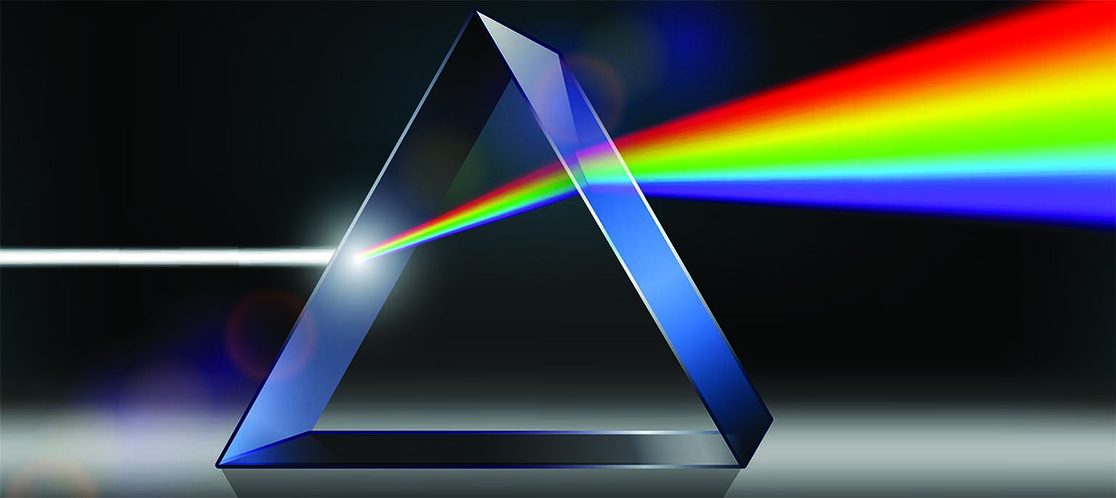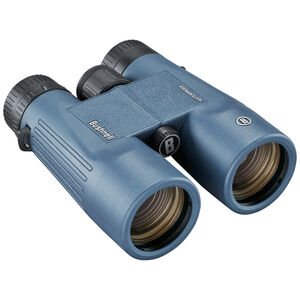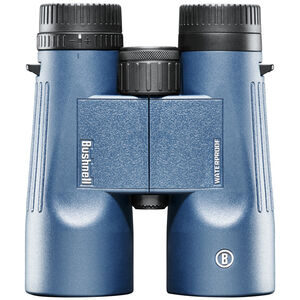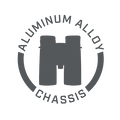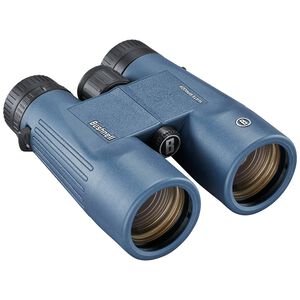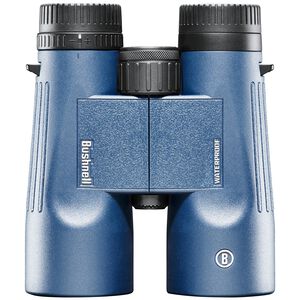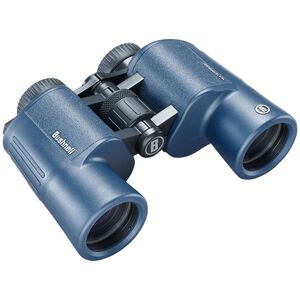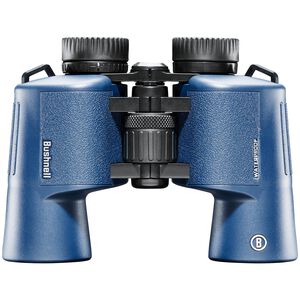Growing up, my brother and I were rather poor. Like most middle-America farm kids, we didn’t know this because everyone we knew was in the same boat. Fortunately, there was plenty of work, so if you needed a new rifle or shotgun, you took that work, saved your dollars, and bought it. Ma and Pa covered room and board.
Bob and I were luckier than most because when seasonal farm jobs dried up, we could work for Dad in his custom butcher shop, stuffing sausages, curing bacon, cleaning tables and saws, or (shiver!) organizing packaged meats in the quick-freeze.
The allure of new hunting gear kept our noses to the grindstones. One of our first purchases after rifle and shotgun were binoculars. They were Bushnells. Mine was a 7X35mm, a size I judged to be a good balance for hunting—not too powerful, not too heavy, so likely to stay around my neck instead of in the truck. I can’t remember what size Bob’s were. Probably a 10X50mm since he liked to one-up me. I shot a 6mm Remington, he shot a .270 Winchester. He had a spotting scope—and I begged to borrow it. Big brothers, what are you going to do?
Anyway, we now had our deer-hunting binoculars in hand and began discovering what every hunter should know about binoculars—that the heart of a binocular is its prisms.
There are two of them, one in each barrel. They help enlarge the image and turn it right side up and properly flipped left-to-right. Done right, they optimize image quality and brightness. Done wrong, they degrade image quality and brightness.
Binocular prims come in two designs, roof and Porro. Both are, at their most basic, multifaceted chunks of glass you see through and that are housed deep inside your binocular’s housing. What you see through these prisms are a magnified image of the world, bright and sharp.
Prisms are essential components in binoculars for two reasons. First, they reorient the upside down and backward images transmitted by the objective lenses. (Yup. That trophy buck you’re glassing emerges from those big, beautiful objective lenses upside down and backward. The prisms straighten him out again.) Second, prisms extend the light path necessary to enlarge the image. Without this extension, binocular barrels would have to be several inches longer. (Think of the old pirate stretching out his spy glass.)
You can determine a binocular’s prism style by the shape of the barrels. Barrels with roof prisms run straight from eyepiece to objective lens. They might flare or swell, but they don’t bend. Binoculars with a step or “dog leg” in the barrels house Porro prisms.
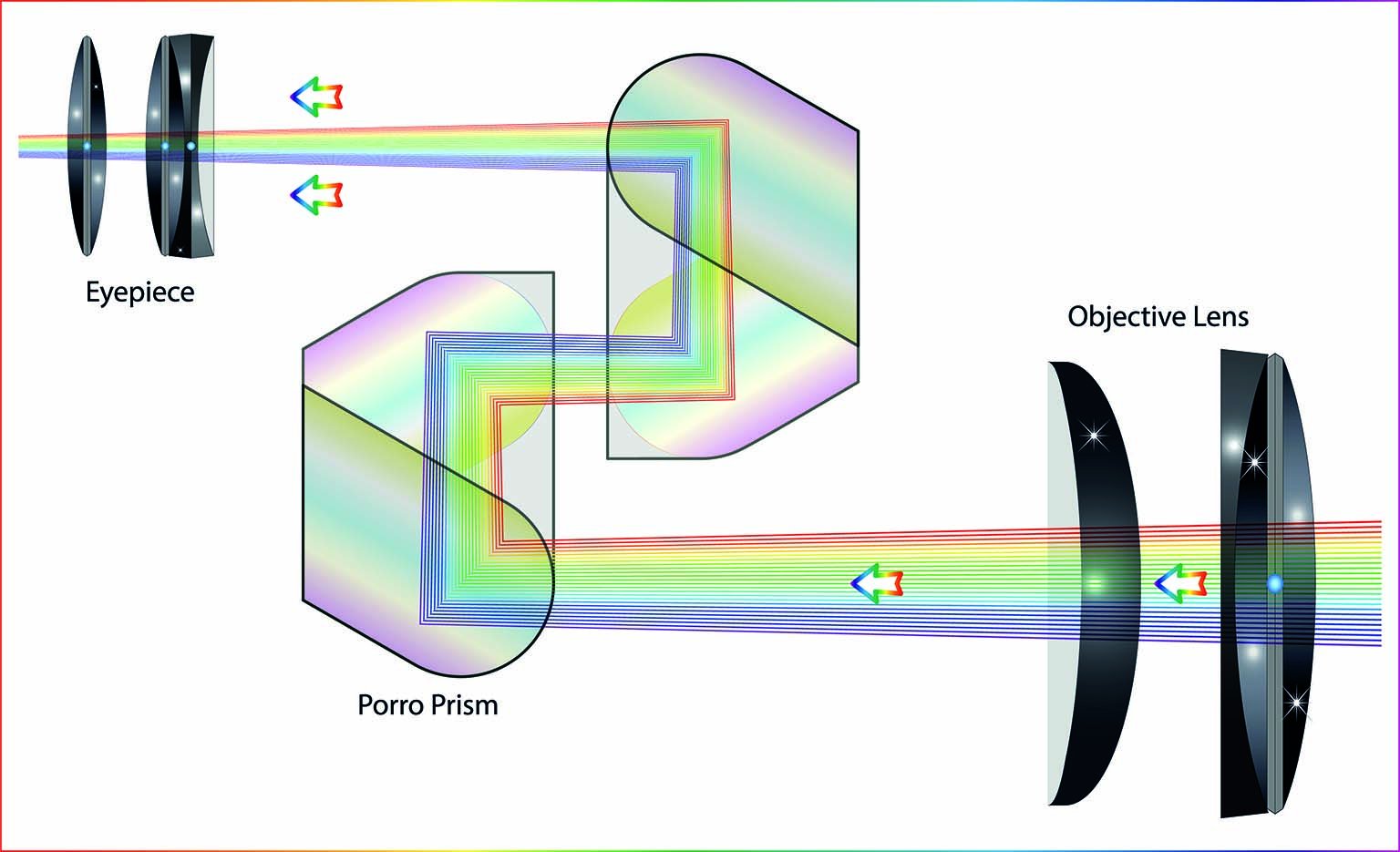
The Porro prism was invented around 1850 by an Italian named Ignazio Porro. Confusingly, a Porro prism is shaped like a roof and a roof prism is shaped like — well, like a confusingly multi-sided chunk of glass. You have to be an optical engineer to make sense of it. As a binocular user, all you have to do is appreciate the images each sends to your eyes. And both can be equally good. So why choose one over the other? Let’s dig deeper for that answer.
A Porro prism is easier to make than a roof, thus a Porro-prism binocular is less expensive than one with a roof prism. It doesn’t need a mirrored surface, and it doesn’t need to be phase-coated to sharpen its image. One of the little-known secrets in the binocular world is that an inexpensive Porro binocular can and often does produce optical quality equal to roof prism models costing two, three, sometimes even four times as much.
Each Porro prism consists of two triangular blocks of glass that look like A-frame cabins with 45-degree roofs. The two are stacked on their long sides, one spun 90-degrees from the other and offset by half their length. Light (the image) from the objective lens enters the first prism to be reflected four times before passing out through the eyepiece lenses. Because the reflections are at 45-degree angles, they require no mirror. Virtually every photon of light is preserved.
The downsides to Porro-prism binoculars are their bulk and sensitivity. The bulk results from that offset in the prism, seen in the doglegged step or bend in the external barrels. The sensitivity is also due to the offset. Rough handling can jar internal glass out of perfect alignment. On the positive side, the extra-wide spread of the objective improves triangulation and depth perception.
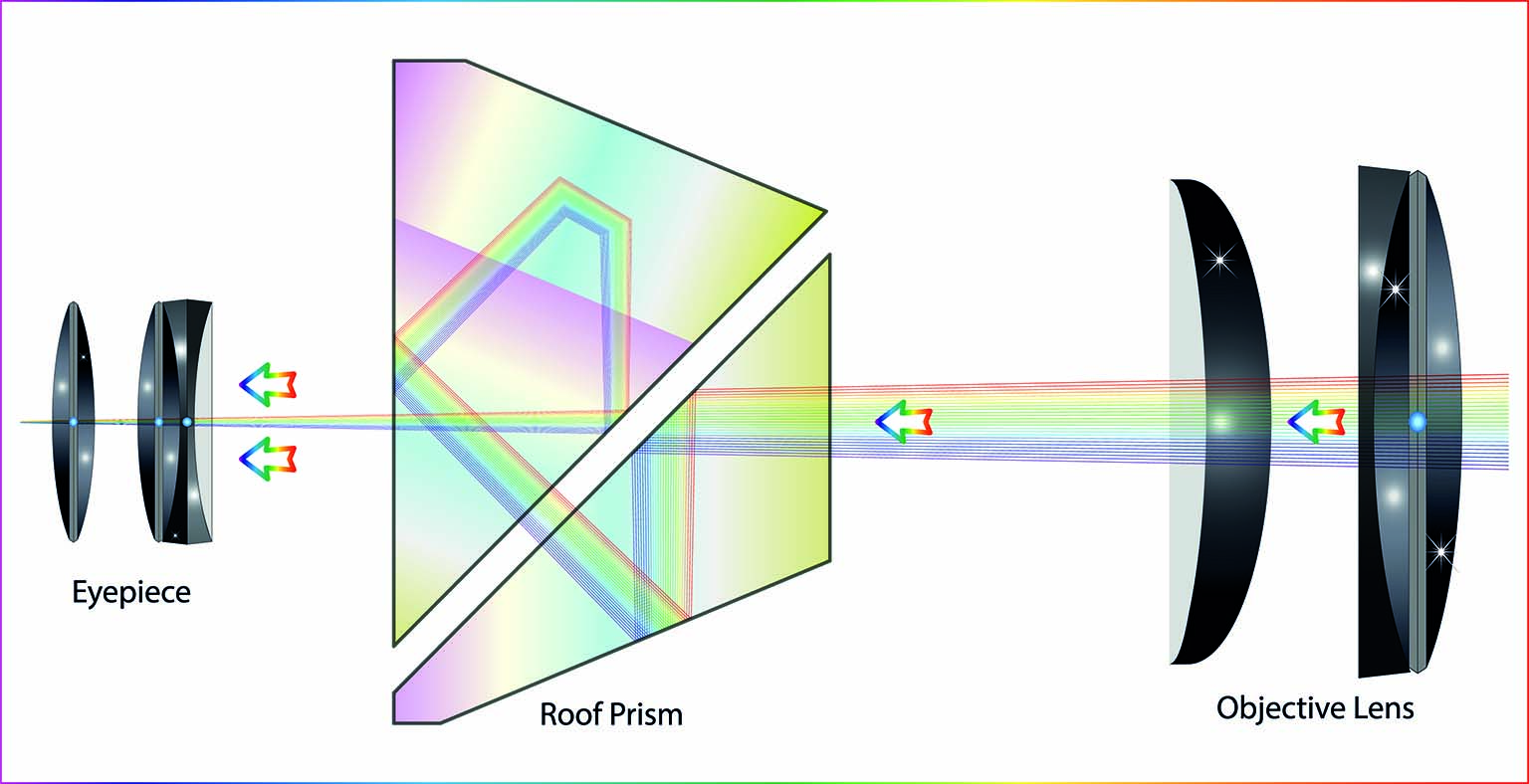
Roof prisms are more durable and compact than Porro-prism designs because the prisms are clamped together—there is no offset. Complicated angles inside the prisms reflect the light six times, and one of those bounces requires a mirror for reflection. A tiny percent of light is lost at mirrored surfaces, so the best roof prisms use the most expensive mirrors, either silver or dielectric. In addition, the roof prism image (light) shifts out of phase as the light moves from the objective lens to the eyes. A special phase coating fixes this.
Most roof prisms today, as described above, are of the Schmidt-Pechan variety. Another variant called the Abbe-Koenig (these are all named after the inventors) does not require a mirror, and so it is naturally brighter. Bright is great, but you’ll pay for it with a longer, heavier binocular. Modern mirrors in the more compact Schmidt-Pechan prisms are so brilliant and effective that Abbe-Koenig prisms are rarely used anymore.
So, how do you decide between Porro and roof prism binoculars? Consider how, when, and where you use your bino. Is it securely cased when not in use and then carefully handled for bird watching? Or does your binocular have a future of being dropped out of treestands in the pouring rain or bouncing from the center console of your pickup to the floor boards with regularity as you roam the backroads scouting for game? From there, and once you know what you want to spend, the following checklist can help narrow the choices:
- Porros give superior optical quality at much lower prices.
- The wider separation of the objective lenses in a Porro prism binocular increase triangulation, improving depth perception.
- Porro prisms are harder to waterproof.
- Porro prisms are more susceptible to bumping out of collimation.
- Roof prisms can be made just as bright and sharp as Porros, but at higher cost.
- Roof prisms are easier to make waterproof, fog-proof, and dustproof.
- Roof prisms are more compact and rugged.
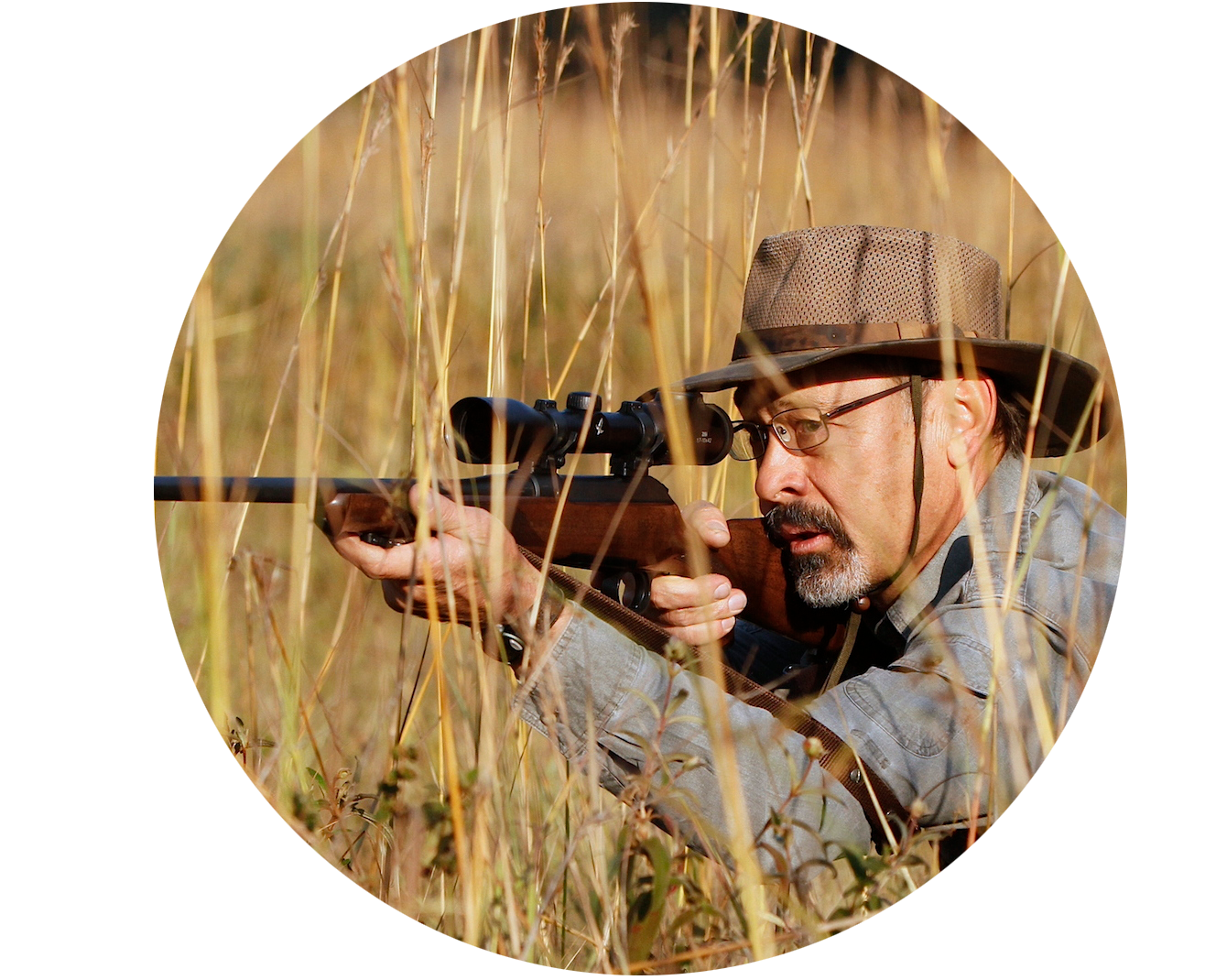
RON SPOMER
Ron Spomer has been a student of the outdoors, firearms, and ballistics for half a century. He has explored, hunted, and photographed around the world, sharing his discoveries and adventures in thousands of award-winning articles and photographs in dozens of magazines, books, and online sites. Spomer has hosted several TV shows and currently posts weekly videos on the Ron Spomer Outdoors YouTube channel. He currently blogs on RonSpomerOutdoors.com and writes for American Hunter, Sporting Classics, Sports Afield, Outdoor Life, and several other print and online magazines.
